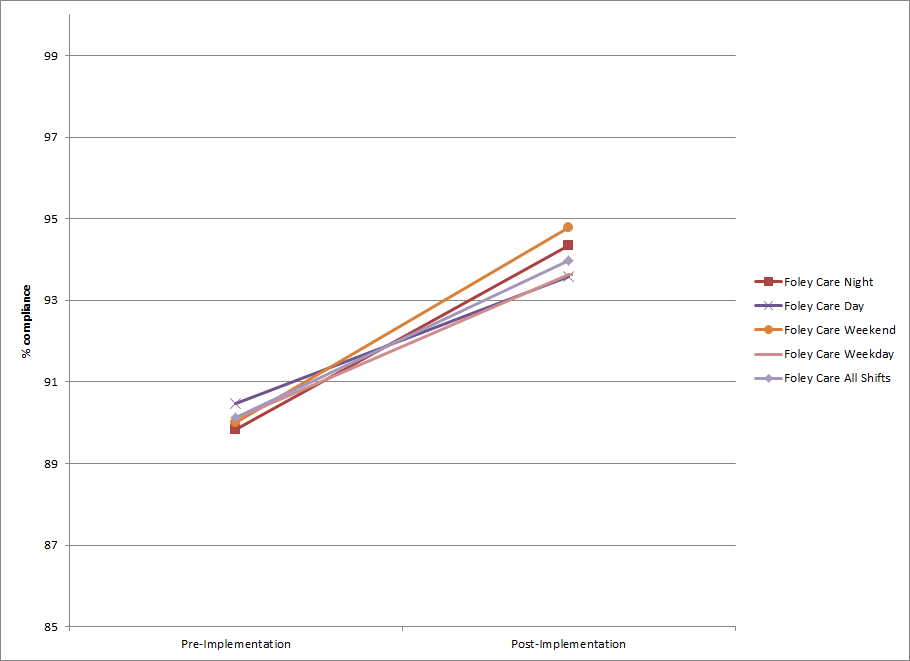M. Scerbo1, J. Holcomb1 1University Of Texas Health Science Center At Houston,Houston, TX, USA
Introduction: Compliance with recommended guidelines is associated with improved patient outcomes, however achieving high levels of compliance has proven difficult in clinical practice. The creation of automated clinical decision support systems (CDSS) to assist with guideline compliance has been met with the criticism due to failure to follow human factors principles. A patient dashboard that displays integrated information automatically extracted from the electronic health record has recently been implemented in our surgical intensive care unit (ICU). The status of compliance with certain bundles of care is displayed in a color-coded fashion (green-good, red-bad); the contribution to the cognitive load of the user and alarm fatigue is minimal as it does not generate any noise, page or text. We hypothesized that the presence of a real-time, color-coded passive display of compliance status would improve compliance rates with Foley care guidelines in our surgical ICU.
Methods: This observational study was conducted in a 23-bed surgical ICU. Compliance with Foley care guidelines were evaluated pre-implementation (2 months) and post-implementation (1 month) of a real-time display of compliance status. A compliance score was calculated by dividing the total number of interventions achieved by the total number of opportunities for interventions and is expressed as a percentage. For this study, the numerator is the total number of nursing shifts in which patients with a Foley received the proper Foley care. The denominator is the total number of nursing shifts in which a patient had a Foley. Foleys that were inserted and discontinued within one 12-hour shift and in and out catheters were excluded from the analysis. Compliance rates were evaluated overall, as well as day/night shifts and weekend/weekday shifts. Categorical variables were analyzed using the Pearson’s χ2 test and with simple logistic regression.
Results: The overall pre-implementation compliance rate was 90% (1631/1810), compared with post-implementation compliance rate of 94% (792/843). The implementation of a passive display of compliance status via the patient dashboard was associated with increased compliance with Foley care guidelines (OR 1.7, 95% CI 1.2-2.4, p = 0.001).
Conclusion: The introduction of a color-coded, consistently present display reporting the compliance status improved compliance rates with Foley care guidelines. This assistance occurred without changing the workflow, requiring additional action from the user or increasing physician alerts, phone calls/pages, or noise. Future analysis will include impact on patient outcomes.
